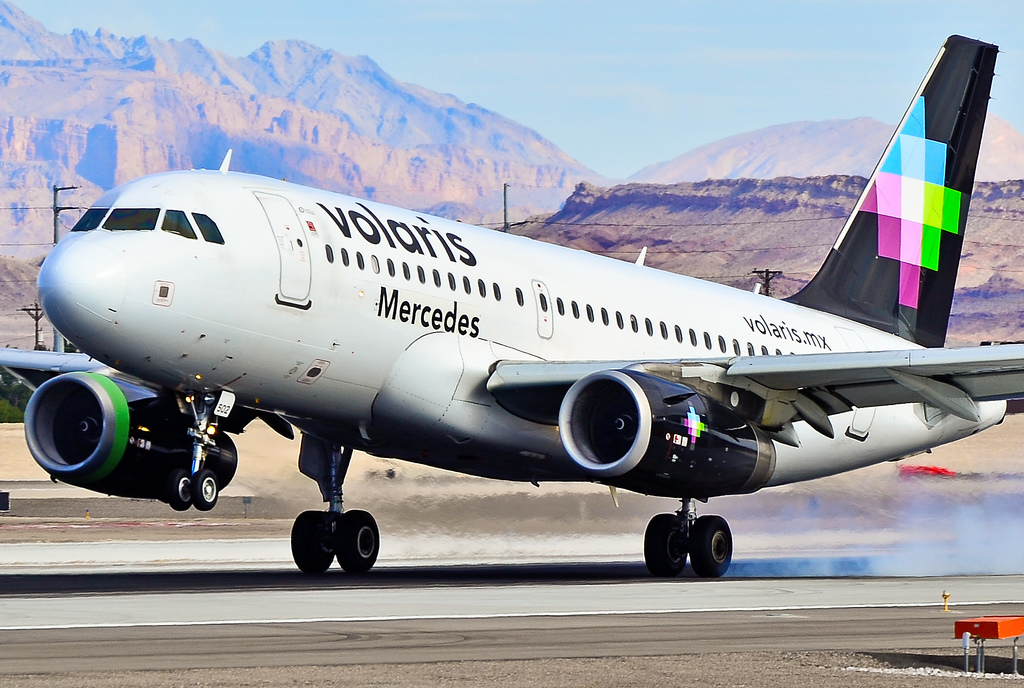Mexico’s Volaris saw domestic revenue passenger miles (RPMs) increase 16.6% in December 2018 on a 9.6% capacity bump, helping the carrier wrap up a generally strong year that saw it benefit from a domestic market shake-out.
The Mexico City-based Ultra-LCC saw full-year RPMs increase 11.5% on an 11.4% rise in capacity. Domestic traffic was up 14.5% for the year on a 14% increase in available seat miles (ASMs). International growth lagged, as RPM growth of 4.7% trailed the carrier’s 6% capacity increase.
Carrier executives said the lagging international traffic figures are a sign of pent-up demand, offset in part by continued migration of domestic traffic from buses to the carrier’s cheap, point-to-point flights.
“With wages at an all-time high, we believe that Mexicans living in the US are kind of postponing their vacation and travel plans, preferring to remain working at this time rather than traveling,” Volaris president and CEO Enrique Beltranena said on the airline’s third-quarter earnings call in late October. “We also believe they are sending remittances and purchasing tickets through their relatives to fly within Mexico … Traffic volume in the domestic market continues to rise, in line with an emerging market economy, which is the way you should look at Volaris, in which the middle class evolves and requires more seats and air travel options.”
Volaris, like others flying US-Mexico routes, have been adjusting international capacity, seeking to find profitable routes following the 2016 Open-Skies agreement that opened up each market. Meanwhile, aggressive domestic-market expansion by Volaris and others created a capacity glut.
As the self-appointed ULCC leader, however, Volaris said it has been able to support higher growth targets than competitors such as Aeromexico, which rely on both hub-and-spoke networks and some business traffic. Aggressive cost-cutting also had the carrier on track to cut full-year, non-fuel unit costs (CASM-ex) 7%-9%.
“Our cost position is the best in the market,” Volaris EVP-airline commercial and operations Holder Blankenstein said. “We are now 45% below our high-cost competitors in terms of unit costs … The growth that we put into the market is healthy growth. It comes from using the existing fleet more efficiently. So, we’re not adding any cost; we’re reducing our cost per available seat mile.”
Volaris posted a CASM-ex of US 4.5 cents for the nine months ended Sept. 30, 2018, down 8.3% year-over-year.
The carrier’s 11.4% full-year capacity increase was at the high end of its most recent guidance that projected a 9%-12% ASM rise. Original plans called for more growth, but Airbus A320neo-family delivery delays forced Volaris to adjust delivery schedules…



